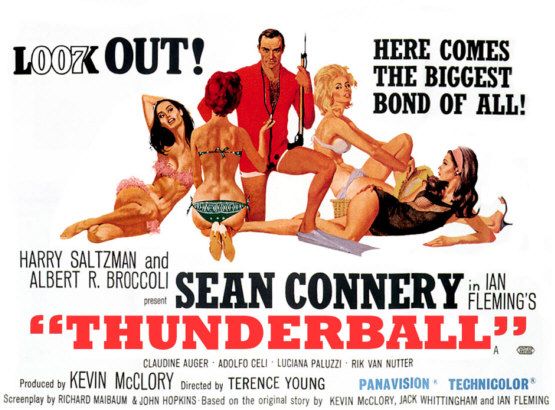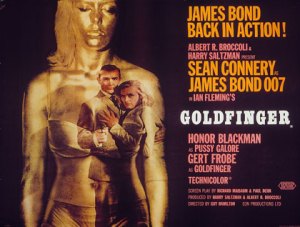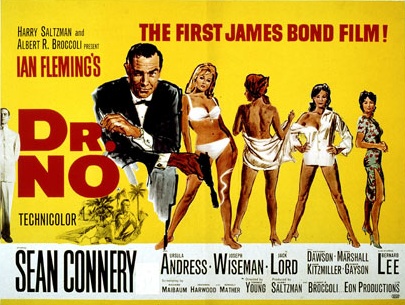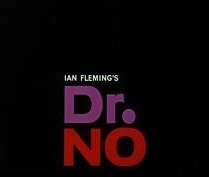July 31, 2011
by popcornaddiction
Sean Connery is back and BlogalongaBond wouldn’t miss it for the world. What’s that you say? A moon buggy?

James Bond (Sean Connery) is back, that Australian business all but forgotten as he finally mudbaths Ernst Blofeld (Charles Gray) and finds himself unenthusiastically hunting diamond smugglers. Usurping the identity of one Peter Franks, Bond infiltrates the smuggling ring via Frank’s contact Tiffany Case (Jill St. John). Forced to kill the real Frank when his cover is under threat of being compromised, Bond switches IDs so that it appears MI6 is onto them, spurring Case to reveal the diamonds’ location and follow Bond to Los Angeles.
Meanwhile Blofeld, still alive and quickly running out of doppelgänger, dispatches henchmen Mr. Wint and Mr. Kidd to systematically kill the remaining smugglers so that he might accumulate enough diamond to power his laser. Having faffed around with the diamonds for an unnecessary length of time, the prize lost in a wave of convolutions, Bond finally infiltrates a research laboratory owned by Willard Whyte – the apparent destination of the stolen diamonds – and discovers Blofeld to be behind this latest madcap scheme.
Like a dolled up elephant accessing the many slot machines peppering this episode of Bond, United Artists have successfully matched Goldfinger‘s director Guy Hamilton with returning star Sean Connery, claiming a box office jackpot following the comparatively underwhelming On Her Majesty’s Secret Service. After the reasonably straight-faced exploits of George Lazeby’s Bond, Diamonds Are Forever marks a return to the dafter days of Connery, where assassins kill by scorpion and secret agents survive by grand theft moon buggy.

Taking a cat’s eye into the opening titles, adorned with the welcomingly familiar dulcet tones of Shirley Bassey, it becomes immediately clear that we’re back in the studio’s comfort zone after a somewhat costly misfire. The safety net of an ensemble is not quite complete, however, as Ernst Blofeld Mark VIII (or something) soon proves with his apparently contractual actor-plant. This has an unfortunate impact on dramatics, as this mini-trilogy of films is brought to a close by different actors than those who started it. The chemistry is off, a fact that is confounded further by the fact that Connery doesn’t appear to have watched the previous instalment at all. Hey, wrinkles, he kind of killed your wife.
Clearly attempting to lighten the tone after Lois Maxwell’s Miss Moneypenny dared to emote at the end of the previous film, the filmmakers introduce hand-holding henchman Mr. Wint and his partner Mr. Kidd to skip, finish one another’s sentences and generally beggar belief – relatively more successfully, it must be said, than Blofeld the 3rd. The Darwin antagonist award goes to Bambi and Thumper, however, a pair of gymnast bodyguards who turn the tables on an increasingly middle-aged Bond, bringing him to his knees for a change with a kick in the double o’s.
My biggest problem with Diamonds Are Forever, like the rest of the series to date, was how needlessly complicated it all was. Despite the fact that the film follows a pretty strict formula, the intricacies of the plot still manage to allude me as I sit down to pen my opening synopsis. There’s some stuff about a stuffed carnival prize, some gratuitous gambling and a truly baffling scene involving cassette tapes. Maybe it’s just late, but with so many characters dying before I can reasonably determine their role in the narrative, my enjoyment never really progresses beyond the most superficial of levels.
Decidedly camp, consistently mad and suddenly trite, Diamonds Are Forever is undoubtedly a step backwards for a franchise in desperate need for a new lease of life. That said, I must admit I absolutely loved it. Maybe it’s the current cinematic climate, but my intolerance for filmic flamboyance is not as tried as my complete aversion to anything needlessly dark and depressing. Leaving the cross-dressing aside for a moment, however, the film boasts the franchise’s most engaging car chase to date, a slew of intentionally funny-one liners and a lift-set skirmish that is very almost visceral – tongue very firmly in cheek as it should be.
While this might mark the end for Connery’s take on the character, the Scotsman certainly goes out with a bang. Very much as bonkers as it is brilliant, however, it is not a movie which will appeal to all. That said, patience is a virtue, and there will be plenty of time for frowns and free running when Daniel Craig (currently 3 years of age) has put toddlerhood behind him. Enjoy the fun factor while it lasts.
















 Opening with a somewhat psychedelic series of retro spots which quickly give way to the iconic gun-barrel opening, this is James Bond but not necessarily as you remember him. As a series of thoroughly unsexy silhouettes dance across the screen to the Jamaican chimes of Byron Lee and the Dragonaires’ Kingston Calypso, the deja-vu is welcomingly tempered with an unexpected dose of novelty. I, after all, am more familiar with the invisible car than Bond’s humbler beginnings, this BlogalongaBond giving me the opportunity revisit the character’s early days – before his eventual campness earns him a friendly neighbourhood rebooting.
Opening with a somewhat psychedelic series of retro spots which quickly give way to the iconic gun-barrel opening, this is James Bond but not necessarily as you remember him. As a series of thoroughly unsexy silhouettes dance across the screen to the Jamaican chimes of Byron Lee and the Dragonaires’ Kingston Calypso, the deja-vu is welcomingly tempered with an unexpected dose of novelty. I, after all, am more familiar with the invisible car than Bond’s humbler beginnings, this BlogalongaBond giving me the opportunity revisit the character’s early days – before his eventual campness earns him a friendly neighbourhood rebooting.

